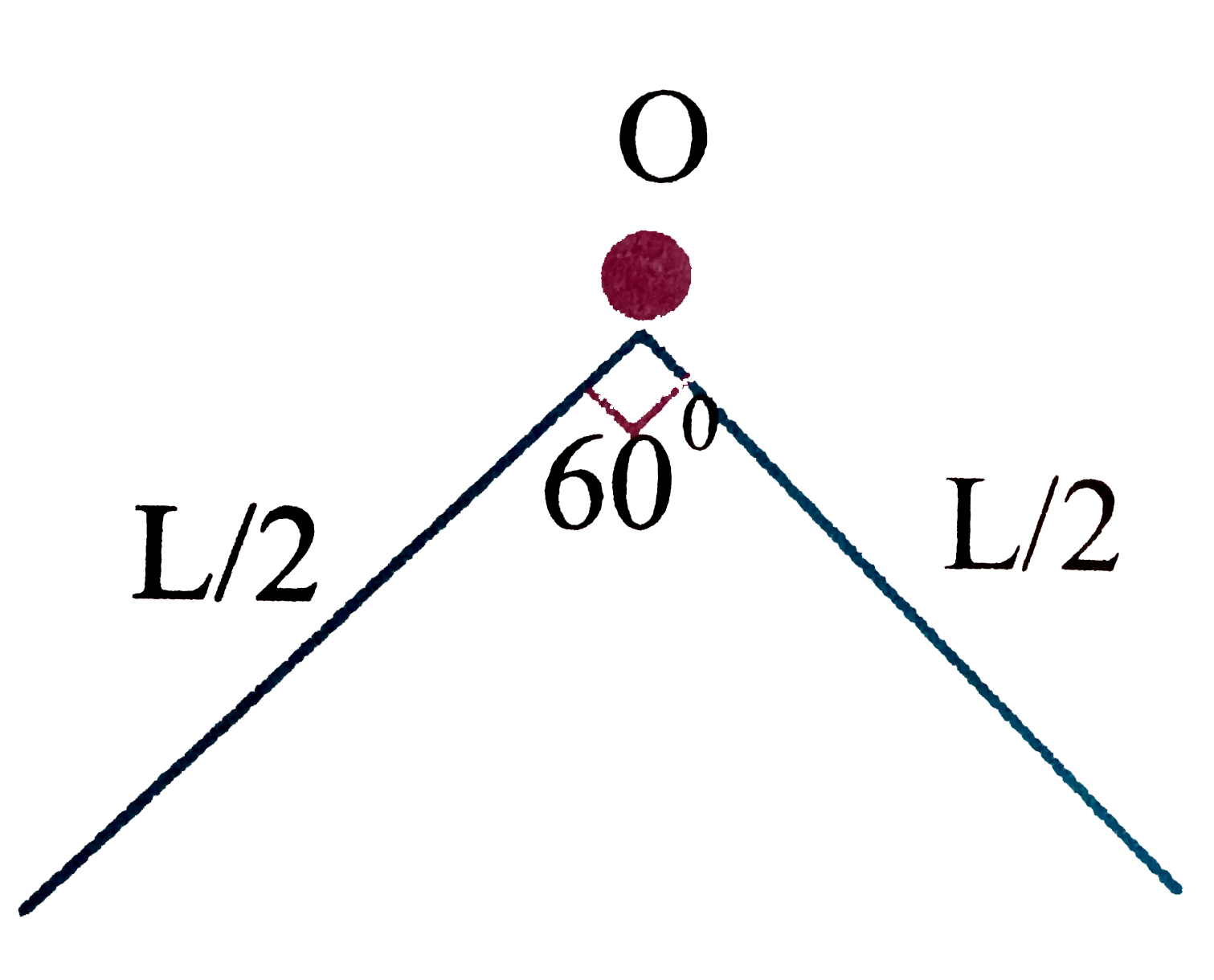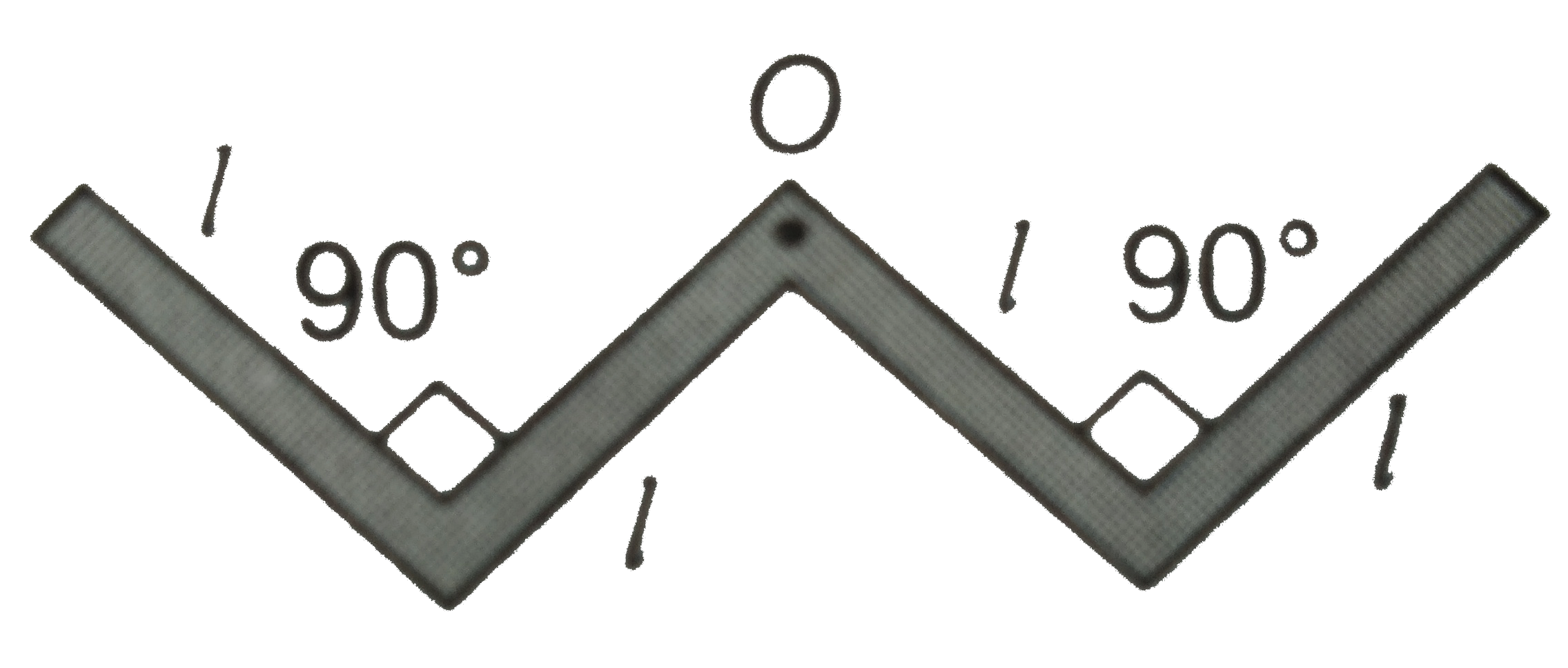An insulting thin rod of length l has a linear charge density ρ(x)=ρ0xl on it. The rod is rotated about an axis passing through the origin (x=0) and perpendicular to the rod. If the rod makes n rotations per second, then the time averaged magnetic moment of the rod is :
πnρl3
π3nρl3
π4nρl3
nρl3
To find the time-averaged magnetic moment of the insulating thin rod with a linear charge density given by ρ(x)=ρ0xl, we can follow these steps:
Step 1: Understanding the Problem
The rod of length l is rotating about an axis at x=0 and perpendicular to its length. The linear charge density varies along the length of the rod, which means the charge distribution is not uniform.
Step 2: Define the Magnetic Moment
The magnetic moment m of a current-carrying loop is given by the formula:
m=I⋅A
where I is the current and A is the area of the loop.
Step 3: Determine the Charge Element
To find the magnetic moment, we first need to consider a small segment of the rod of length dx at a distance x from the origin. The charge dQ on this segment can be expressed as:
dQ=ρ(x)⋅dx=ρ0xl⋅dx
Step 4: Calculate the Current
The current dI due to the charge dQ can be calculated as:
dI=dQT
where T is the time period of rotation. The time period T is given by:
T=1n
Thus, the current becomes:
dI=dQ⋅n=ρ0xl⋅dx⋅n
Step 5: Calculate the Area
The area A swept by the charge element when the rod rotates is the area of a circle with radius x:
A=πx2
Step 6: Find the Magnetic Moment of the Segment
The magnetic moment dm of the small segment can now be expressed as:
dm=dI⋅A=(ρ0xl⋅n⋅dx)⋅πx2=ρ0nπlx3dx
Step 7: Integrate to Find Total Magnetic Moment
To find the total magnetic moment m, we integrate dm from 0 to l:
m=∫l0dm=∫l0ρ0nπlx3dx
Step 8: Perform the Integration
The integral can be calculated as follows:
m=ρ0nπl∫l0x3dx=ρ0nπl⋅(x44)l0=ρ0nπl⋅l44
m=ρ0nπl34
Final Result
Thus, the time-averaged magnetic moment of the rod is:
ρ0nπl34
The rod of length l is rotating about an axis at x=0 and perpendicular to its length. The linear charge density varies along the length of the rod, which means the charge distribution is not uniform.
The magnetic moment m of a current-carrying loop is given by the formula:
m=I⋅A
where I is the current and A is the area of the loop.
To find the magnetic moment, we first need to consider a small segment of the rod of length dx at a distance x from the origin. The charge dQ on this segment can be expressed as:
dQ=ρ(x)⋅dx=ρ0xl⋅dx
The current dI due to the charge dQ can be calculated as:
dI=dQT
where T is the time period of rotation. The time period T is given by:
T=1n
Thus, the current becomes:
dI=dQ⋅n=ρ0xl⋅dx⋅n
The area A swept by the charge element when the rod rotates is the area of a circle with radius x:
A=πx2
The magnetic moment dm of the small segment can now be expressed as:
dm=dI⋅A=(ρ0xl⋅n⋅dx)⋅πx2=ρ0nπlx3dx
To find the total magnetic moment m, we integrate dm from 0 to l:
m=∫l0dm=∫l0ρ0nπlx3dx
The integral can be calculated as follows:
m=ρ0nπl∫l0x3dx=ρ0nπl⋅(x44)l0=ρ0nπl⋅l44
m=ρ0nπl34
Thus, the time-averaged magnetic moment of the rod is:
ρ0nπl34
Topper's Solved these Questions
Similar Questions

A uniform rod of mass m is rotated about an axis passing through point O as shown. Find angular momentum of the rod about rotational law.
View SolutionA thin rod of length L of mass M is bent at the middle point O at an angle of 60∘. The moment of inertia of the rod about an axis passing through O and perpendicular to the plane of the rod will be

View Solution
Knowledge Check
The radius of gyration of an uniform rod of length l about an axis passing through one of its ends and perpendicular to its length is.
Al√2Bl3Cl√3Dl2
A non-conducting rod AB of length l has total charge Q . The rod is rotated about an axis passing through a point (l/3) distance from one end and perpendicular to plane of rod with constant angular speed omega, the magnetic moment of rod is
View SolutionMoment of inertia of a thin rod of mass m and length l about an axis passing through a point l/4 from one end and perpendicular to the rod is
View SolutionA thin rod of length 4l, mass 4 m is bent at the point as shown in the figure. What is the moment of inertia of the rod about the axis passing through O and perpendicular to the plane of the paper?

View Solution
A thin rod of length 4l, mass 4 m is bent at the point as shown in the figure. What is the moment of inertia of the rod about the axis passing through O and perpendicular to the plane of the paper?
View SolutionAn insulating rod of length I carries a charge q distrubuted uniformly on it. The rod is pivoted at its mid-point and is rotated at a frequency f about a fixed axis perpendicular to the the rod and passing through the pivot . The magnetic moment of the rod system is
View SolutionAn insulating rod of length I carries a charge q distrubuted uniformly on it. The rod is pivoted at its mid-point and is rotated at a frequency f about a fixed axis perpendicular to the the rod and passing through the pivot . The magnetic moment of the rod system is
View SolutionA thin uniform rod of mass M and length L. Find the radius of gyration for rotation about an axis passing through a point at a distance ofL4 from centre and perpendicular to rod.
View Solution
